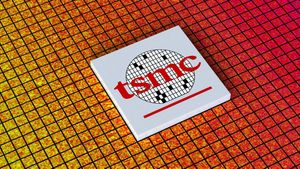Acrylonitrile Styrene Acrylate (ASA) is widely used in outdoor applications, automotive parts, construction materials, and 3D printing due to its excellent weather resistance, UV stability, favorable mechanical properties, and high surface gloss. However, during the molding process of ASA—particularly in injection molding and 3D printing—manufacturers often encounter demolding difficulties. These issues manifest as adhesion between the product and the mold or printing bed and may even result in surface damage, deformation, or tearing during demolding. Such problems significantly impact both production efficiency and product quality.
This article aims to provide an in-depth analysis of the root causes and mechanisms behind ASA demolding challenges and, on this basis, present a systematic series of effective optimization methods and technical solutions for ASA Materials.
Root Causes Behind ASA Demolding Problems
Understanding the root causes is critical to effective solutions.
1. Material Factors:
High thermal expansion and uneven shrinkage cause internal stresses and warpage.
High surface energy leads to strong adhesion with mold or print bed surfaces.
Layer adhesion in 3D printing is temperature sensitive, risking delamination.
2. 3D Printing Challenges:
Excessively strong or weak first-layer adhesion causes either stuck parts or warping/falling off.
Uneven cooling induces internal stress and deformation.
Open printing environments cause temperature fluctuations and warpage.
3. Injection Molding Challenges:
Insufficient draft angles increase friction during ejection.
Mold surface roughness impacts adhesion and vacuum effects.
Improper mold temperature control affects part rigidity and shrinkage.
Inadequate ejection mechanisms cause uneven forces leading to damage.
4. Additional Factors:
Lack of internal lubricants or release agents in ASA formulations.
Non-optimized processing parameters (temperature, pressure, cooling).
ASA Materials Mold Release Optimization: Overcoming Industry Challenges with Effective Solutions
1. Material Selection and Modification:
Use ASA grades formulated for easier demolding.
Incorporate internal release agents such as silicone additives, stearates, or amides.
Case in Point: Introduction to SILIKE Silicone Masterbatch Release Agent LYSI-415
![]()
LYSI-415 is a pelletized masterbatch comprising 50% ultra-high molecular weight (UHMW) siloxane polymer uniformly dispersed within a Styrene-Acrylonitrile (SAN) carrier resin. It is engineered as a high-performance additive for SAN-compatible polymer systems to enhance processing behavior and surface quality. Furthermore, LYSI-415 is applicable as a functional additive in ASA (Acrylonitrile Styrene Acrylate) formulations to improve processing and modify surface characteristics.
Key Benefits ofLYSI-415 mold release agent for ASA material
Incorporation of silicone masterbatch LYSI-415 into ASA at concentrations ranging from 0.2 wt% to 2 wt% yields significant improvements in melt flow, resulting in enhanced mold cavity filling, reduced extrusion torque, internal lubrication, and more efficient demolding, leading to increased cycle throughput. At elevated loadings of 2 wt% to 5 wt%, further enhancements in surface functionality are observed, including improved lubricity, slip properties, decreased coefficient of friction, and superior resistance to mar and abrasion.
Compared to conventional low molecular weight siloxane additives, the SILIKE LYSI series siloxane additives demonstrate superior performance by minimizing screw slippage, improving mold release consistency, lowering frictional resistance, and reducing defects in subsequent paint and printing operations. This results in broader processing windows and enhanced end-product quality for ASA and SAN-based materials.
2. Process Parameter Optimization:
Maintain stable, enclosed printing chambers for 3D printing.
Precisely control bed temperature, nozzle gap, and adhesion promoters.
Optimize mold temperature and cooling profiles for injection molding.
3. Mold Design Improvements:
Increase draft angles to reduce ejection friction.
Optimize mold surface finish via coatings or treatments.
Properly locate and size ejector pins to distribute forces evenly.
4. Auxiliary Demolding Techniques:
Apply high-quality, uniformly distributed mold release agents compatible with post-processing.
Use removable flexible print beds for 3D printing to ease part removal.
Ready to Improve Your ASA Processing?
Optimize Your ASA Compound Formulation with SILIKE processing lubricating release agent
If you’re facing challenges such as difficult demolding, poor surface finish, or lubricant migration in ASA parts, SILIKE Silicone additive LYSI-415 offers a proven, easy-to-use solution that enhances processability without compromise—no precipitation issues. Applications extend to automotive components, outdoor products, and precision 3D-printed parts.
Contact SILIKE to get your effective processing mold release agent for ASA material to unlock higher efficiency and superior surface quality in your ASA parts.
Tel: +86-28-83625089
Email: amy.wang@silike.cn
Website: www.siliketech.com
Media Contact
Company Name: Chengdu Silike Technology Co., Ltd.
Email: Send Email
Country: China
Website: https://www.siliketech.com/





